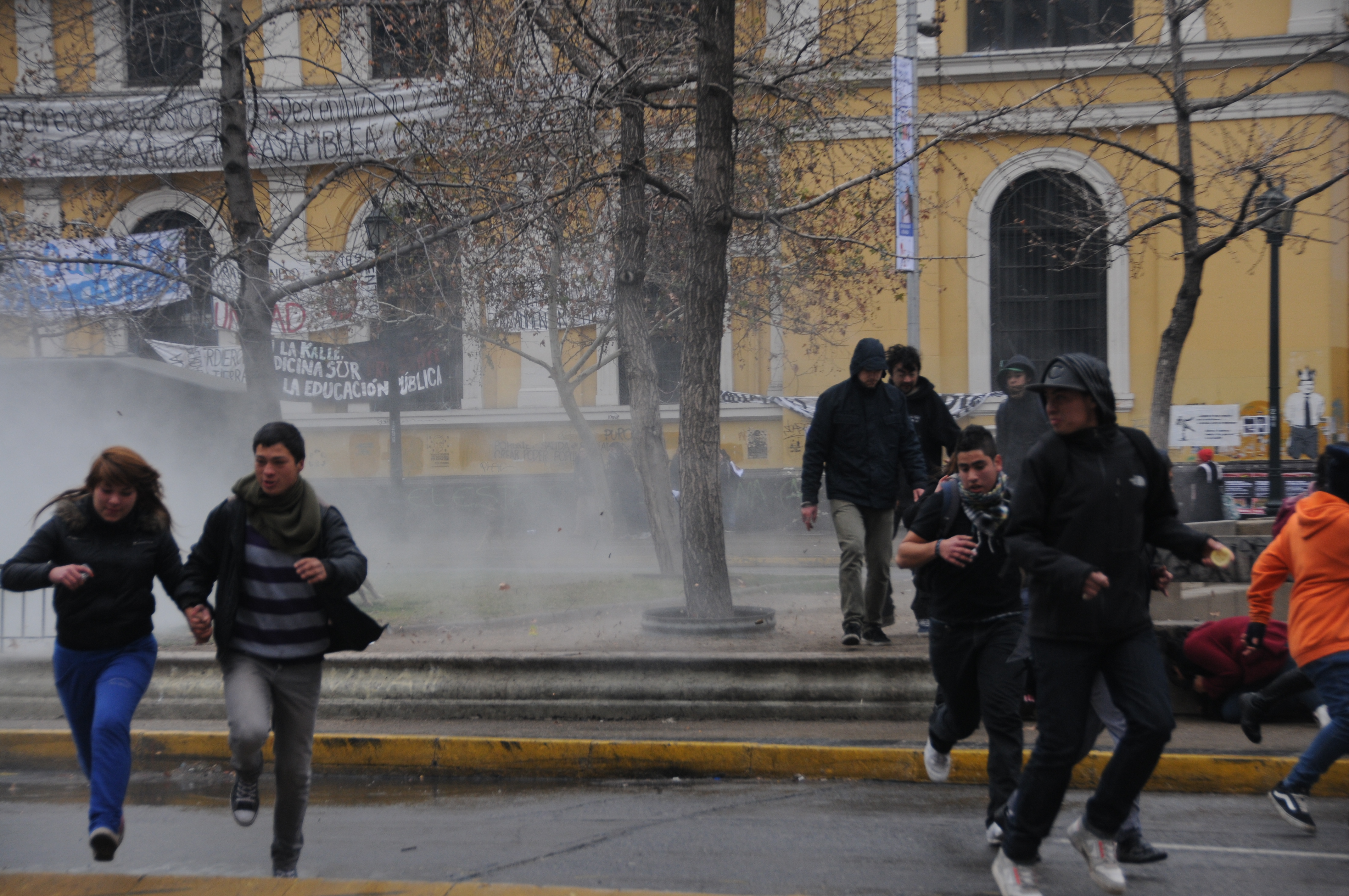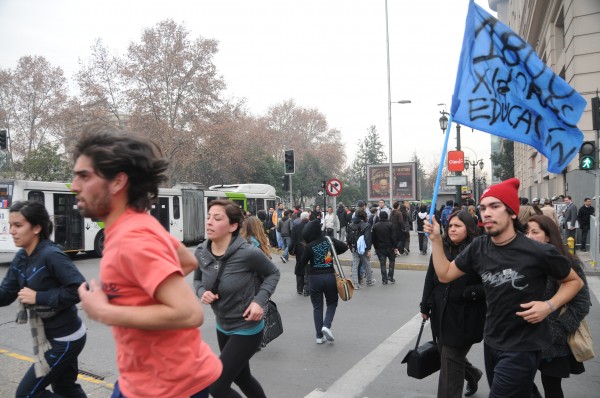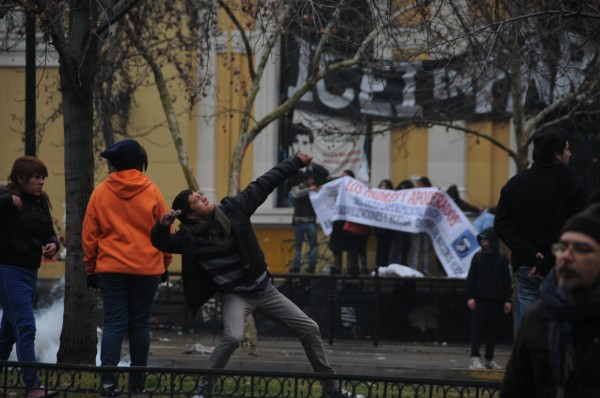I FIGURED SOMETHING OUT,” I told a group of policemen standing next to me in their ninja-turtlesque riot gear on the corner of San Antonio and the Alameda in downtown Santiago. “If I stand by you guys, I don’t get hit by water.”
“No,” responded one of the police officers, “you just get hit by rocks.”




